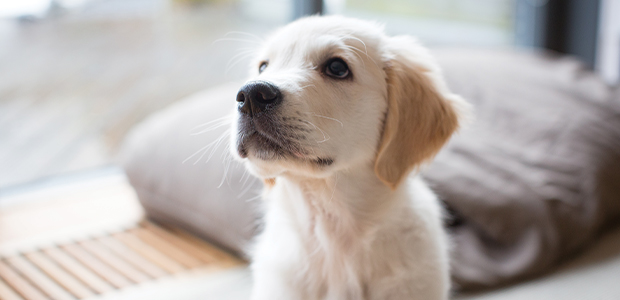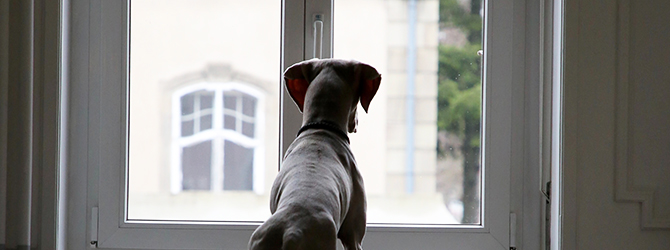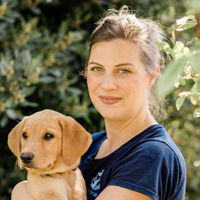Dog separation anxiety training: easing your dog’s nerves when they’re left alone
Dogs are sociable creatures. It’s why we love them, and a great factor we take into consideration when choosing them as pets; they follow us around, greet us excitedly when we get home and generally adore us.
The one downside of dogs and their sociability, however, is that they’re sometimes prone to separation anxiety.
Let’s take a closer look at separation anxiety in dogs: how to make sure your puppy feels safe in their own company, and how to treat dogs with a pre-existing condition.
Why might dogs feel uncomfortable on their own?
Before we look at separation anxiety training or treating separation anxiety in dogs, it’s useful to consider the causes of it. First off – it’s important to understand that dogs are, like humans, naturally sociable creatures. In the wild, they’d be part of a pack – many dogs relish the company of other canines and they certainly prefer to be alone with their owners than with their own devices.
For dogs, it simply isn’t natural or instinctual to be alone. Further causes of separation anxiety can include:
- The dog is experiencing being alone for the first time
- A change to their home environment (moving house, fireworks during Bonfire Night)
- The loss of a canine companion
- Boredom, or lack of suitable mental stimulation (known as Separation Related Behaviours).
Does my dog have separation anxiety?
It’s not always easy to tell if your dog is suffering from separation anxiety because most of their symptoms will take place when you’re apart.
Did you know?
Research has shown that in the UK, between 13-29% of dogs exhibit signs of separation anxiety or separation-related behaviour. These figures only include owners who recognise and understand that separation-related behaviour is an issue. Many dogs show no active signs of separation-related behaviour but do show signs of anxiety and stress when they’re assessed by means of video footage and salivary cortisol levels.
As you get ready to leave the house, take notice of your dog’s behaviour. Dogs can pick up on the small details that indicate whether you plan to leave the house with or without them – you picking up your car keys, for example, or putting on your work shoes – so a change in their behaviour can become apparent a little while before they’re left alone. They may follow you around, whine, or even lie in front of the door.
Symptoms of separation anxiety in dogs are often more obvious when you get home. Anxious dogs are known to scratch doors and furniture, chew certain objects and go to the toilet indoors. They may also be overexcited to see you, and follow you wherever you go.
Video footage can be useful to determine how ‘settled’ your dog is when left alone – owners are often surprised at what they see!

Dog separation anxiety training: prevention
It’s important to recognise that preventing separation anxiety in young puppies and treating a pre-existing condition are two entirely different processes – the latter may well require the help of a behaviourist.
As an owner, it’s a great idea to get your young dog used to their own company fairly early. Do it in stages, gradually increasing the amount of time your puppy spends on their own.
- Choose the location – the place your dog will spend their time while you’re out (so somewhere they associate with comfort when you are around).
- If you can, use a safety gate rather than closing the door, so your pet can still see you.
- Use long-lasting treats to make sure your dog associates this location positively.
- Once your dog has their treat, go about your usual business with the safety gate between you.
- Gradually increase the length of time your dog spends on their own until they’re comfortable for 30 minutes.
- Once they’re fine with this, you can start leaving the house for short periods. Consider videoing them to ensure they are settled.
It’s important for your dog to associate their alone time positively; for them to be aware that you leaving the house is a normal occurrence, and that you always come back.
Make use of their crate
Your dog’s crate can be a godsend if they can learn to associate it positively – as a place of comfort, where they’re always given a treat. That said, be sure not to use their crate as a solution to separation-related behaviour, or without first training them to enjoy spending time in it – this can create further issues associated with confinement.
Treatment
Treating separation anxiety in dogs, where the dog’s condition is pre-established, will likely require the help of a professional veterinary behaviourist. They will use a process known as ‘desensitisation and counter conditioning’, designed to teach dogs that being left alone is okay (in some cases even enjoyable and relaxing!)
Methods of treatment will vary according to your dog’s symptoms and the severity of their condition. Behaviourists will usually use therapy-based methods, although pheromones and stress-relieving products may be advised in some cases.
When treating separation anxiety in dogs, you should always seek the advice of your vet. They’ll advise on the best course of action to take and may even be able to recommend a behaviourist.

Punishment: why it only makes things worse
Coming home to discover that your dog has made a mess of your living room can be frustrating, and your first instinct may well be to shout at them. It is, however, important NOT TO DO THIS.
Your dog will not associate the mess they made (often as far back as eight hours ago) with you coming home and shouting at them. All punishment will do is confuse your dog, and likely add to their anxiety further. Shouting at them will not train negative behaviour out of them and in many cases, will make it worse. Behavioural training should always be reward-based.
We recommend Vetpro: Stress & anxiety - developed and approved by expert vets and gets to work in just one hour!
Need more info?
For more information on dog separation anxiety training, or any aspect of their welfare, have a chat with your local vet.
Find your nearest vet using our Find a Vet page, or speak to a vet online using Online Vets.

